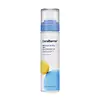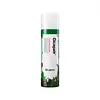What's inside
What's inside
 Key Ingredients
Key Ingredients

 Benefits
Benefits

 Concerns
Concerns

 Ingredients Side-by-side
Ingredients Side-by-side

Water
Skin Conditioning2,3-Butanediol
HumectantDiglycerin
HumectantMethylpropanediol
SolventPentylene Glycol
Skin ConditioningGlycerin
HumectantCeramide NP
Skin ConditioningCeramide AP
Skin ConditioningCeramide As
Skin ConditioningCeramide Ng
Skin ConditioningBeta-Sitosterol
Emulsion StabilisingCeramide EOP
Skin ConditioningPortulaca Oleracea Extract
Skin ConditioningLimnanthes Alba Seed Oil
Skin ConditioningHydrogenated Lecithin
EmulsifyingCitrus Aurantium Bergamia Fruit Oil
MaskingBetula Platyphylla Japonica Juice
Skin ConditioningLavandula Angustifolia Oil
MaskingMatricaria Recutita Flower Oil
PerfumingOrange Roughy Oil
Skin ConditioningLemongrass Oil
Lilium Speciosum Flower Oil
MaskingSimmondsia Chinensis Seed Oil
EmollientCarthamus Tinctorius Seed Oil
MaskingOctyldodeceth-16
EmulsifyingPolyglyceryl-10 Stearate
Skin ConditioningSodium Citrate
BufferingHydroxyacetophenone
AntioxidantEthylhexylglycerin
Skin ConditioningCitric Acid
BufferingCarbon Dioxide
Caprylic/Capric Triglyceride
MaskingDisodium EDTA
Dipropylene Glycol
Humectant1,2-Hexanediol
Skin ConditioningGlyceryl Glucoside
HumectantSucrose Stearate
EmollientGlycosphingolipids
EmollientLinoleic Acid
CleansingLimonene
PerfumingCitronellol
PerfumingWater, 2,3-Butanediol, Diglycerin, Methylpropanediol, Pentylene Glycol, Glycerin, Ceramide NP, Ceramide AP, Ceramide As, Ceramide Ng, Beta-Sitosterol, Ceramide EOP, Portulaca Oleracea Extract, Limnanthes Alba Seed Oil, Hydrogenated Lecithin, Citrus Aurantium Bergamia Fruit Oil, Betula Platyphylla Japonica Juice, Lavandula Angustifolia Oil, Matricaria Recutita Flower Oil, Orange Roughy Oil, Lemongrass Oil, Lilium Speciosum Flower Oil, Simmondsia Chinensis Seed Oil, Carthamus Tinctorius Seed Oil, Octyldodeceth-16, Polyglyceryl-10 Stearate, Sodium Citrate, Hydroxyacetophenone, Ethylhexylglycerin, Citric Acid, Carbon Dioxide, Caprylic/Capric Triglyceride, Disodium EDTA, Dipropylene Glycol, 1,2-Hexanediol, Glyceryl Glucoside, Sucrose Stearate, Glycosphingolipids, Linoleic Acid, Limonene, Citronellol
Water
Skin ConditioningPropanediol
SolventCentella Asiatica Extract
CleansingMadecassoside
AntioxidantChondrus Crispus Extract
Skin ConditioningSaccharum Officinarum Extract
MoisturisingLavandula Angustifolia Oil
MaskingRosmarinus Officinalis Leaf Oil
MaskingCitrus Grandis Peel Oil
MaskingAnthemis Nobilis Flower Oil
MaskingSea Water
HumectantZanthoxylum Piperitum Fruit Extract
Skin ConditioningAchillea Millefolium Extract
CleansingAlchemilla Vulgaris Extract
AstringentAnastatica Hierochuntica Extract
AstringentMalva Sylvestris Extract
AstringentMelissa Officinalis Leaf Extract
Skin ConditioningMentha Piperita Leaf Extract
Skin ConditioningPrimula Veris Extract
Skin ConditioningVeronica Officinalis Extract
Skin ConditioningHouttuynia Cordata Extract
Skin ConditioningLactobacillus Ferment
Skin ConditioningChrysanthemum Coccineum Flower Extract
Skin ConditioningEucalyptus Citriodora Oil
MaskingGlycerin
HumectantButylene Glycol
HumectantPolyglyceryl-2 Oleate
EmulsifyingPEG-60 Hydrogenated Castor Oil
EmulsifyingDipropylene Glycol
HumectantOctyldodeceth-16
EmulsifyingDipotassium Glycyrrhizate
HumectantEthylhexylglycerin
Skin ConditioningSodium Citrate
BufferingCitric Acid
BufferingPanthenol
Skin ConditioningAsiaticoside
AntioxidantSodium PCA
HumectantAsiatic Acid
Skin ConditioningHydrogenated Lecithin
EmulsifyingMadecassic Acid
Skin ConditioningMagnesium PCA
Humectant1,2-Hexanediol
Skin ConditioningZinc PCA
HumectantPEG-40 Hydrogenated Castor Oil
EmulsifyingManganese PCA
HumectantSodium Hyaluronate
HumectantPhenoxyethanol
PreservativePotassium Sorbate
PreservativeDisodium EDTA
Water, Propanediol, Centella Asiatica Extract, Madecassoside, Chondrus Crispus Extract, Saccharum Officinarum Extract, Lavandula Angustifolia Oil, Rosmarinus Officinalis Leaf Oil, Citrus Grandis Peel Oil, Anthemis Nobilis Flower Oil, Sea Water, Zanthoxylum Piperitum Fruit Extract, Achillea Millefolium Extract, Alchemilla Vulgaris Extract, Anastatica Hierochuntica Extract, Malva Sylvestris Extract, Melissa Officinalis Leaf Extract, Mentha Piperita Leaf Extract, Primula Veris Extract, Veronica Officinalis Extract, Houttuynia Cordata Extract, Lactobacillus Ferment, Chrysanthemum Coccineum Flower Extract, Eucalyptus Citriodora Oil, Glycerin, Butylene Glycol, Polyglyceryl-2 Oleate, PEG-60 Hydrogenated Castor Oil, Dipropylene Glycol, Octyldodeceth-16, Dipotassium Glycyrrhizate, Ethylhexylglycerin, Sodium Citrate, Citric Acid, Panthenol, Asiaticoside, Sodium PCA, Asiatic Acid, Hydrogenated Lecithin, Madecassic Acid, Magnesium PCA, 1,2-Hexanediol, Zinc PCA, PEG-40 Hydrogenated Castor Oil, Manganese PCA, Sodium Hyaluronate, Phenoxyethanol, Potassium Sorbate, Disodium EDTA
 Reviews
Reviews

Ingredients Explained
These ingredients are found in both products.
Ingredients higher up in an ingredient list are typically present in a larger amount.
1,2-Hexanediol is a synthetic liquid and another multi-functional powerhouse.
It is a:
- Humectant, drawing moisture into the skin
- Emollient, helping to soften skin
- Solvent, dispersing and stabilizing formulas
- Preservative booster, enhancing the antimicrobial activity of other preservatives
Citric Acid is an alpha hydroxy acid (AHA) naturally found in citrus fruits like oranges, lemons, and limes.
Like other AHAs, citric acid can exfoliate skin by breaking down the bonds that hold dead skin cells together. This helps reveal smoother and brighter skin underneath.
However, this exfoliating effect only happens at high concentrations (20%) which can be hard to find in cosmetic products.
Due to this, citric acid is usually included in small amounts as a pH adjuster. This helps keep products slightly more acidic and compatible with skin's natural pH.
In skincare formulas, citric acid can:
While it can provide some skin benefits, research shows lactic acid and glycolic acid are generally more effective and less irritating exfoliants.
Most citric acid used in skincare today is made by fermenting sugars (usually from molasses). This synthetic version is identical to the natural citrus form but easier to stabilize and use in formulations.
Read more about some other popular AHA's here:
Learn more about Citric AcidDipropylene Glycol is a synthetically created humectant, stabilizer, and solvent.
This ingredient helps:
Dipropylene glycol is technically an alcohol, but it belongs to the glycol family (often considered part of the ‘good’ alcohols). This means it is hydrating and gentle on skin unlike drying solvent alcohols like denatured alcohol.
As a masking agent, Dipropylene Glycol can be used to cover the smell of other ingredients. However, it does not have a scent.
Studies show Dipropylene Glycol is considered safe to use in skincare.
Learn more about Dipropylene GlycolDisodium EDTA plays a role in making products more stable by aiding other preservatives.
It is a chelating agent, meaning it neutralizes metal ions that may be found in a product.
Disodium EDTA is a salt of edetic acid and is found to be safe in cosmetic ingredients.
Learn more about Disodium EDTAEthylhexylglycerin (we can't pronounce this either) is commonly used as a preservative and skin softener. It is derived from glyceryl.
You might see Ethylhexylglycerin often paired with other preservatives such as phenoxyethanol. Ethylhexylglycerin has been found to increase the effectiveness of these other preservatives.
Glycerin is already naturally found in your skin. It helps moisturize and protect your skin.
A study from 2016 found glycerin to be more effective as a humectant than AHAs and hyaluronic acid.
As a humectant, it helps the skin stay hydrated by pulling moisture to your skin. The low molecular weight of glycerin allows it to pull moisture into the deeper layers of your skin.
Hydrated skin improves your skin barrier; Your skin barrier helps protect against irritants and bacteria.
Glycerin has also been found to have antimicrobial and antiviral properties. Due to these properties, glycerin is often used in wound and burn treatments.
In cosmetics, glycerin is usually derived from plants such as soybean or palm. However, it can also be sourced from animals, such as tallow or animal fat.
This ingredient is organic, colorless, odorless, and non-toxic.
Glycerin is the name for this ingredient in American English. British English uses Glycerol/Glycerine.
Learn more about GlycerinHydrogenated Lecithin is created from the hydrogenation of lecithin (a group of phospholipids). Hydrogenation is a chemical reaction between hydrogen and another element.
This ingredient is an emollient and emulsifier. As an emollient, it helps soften skin by trapping moisture within. As an emulsifier, it prevents oil and water ingredients from separating.
Lavandula Angustifolia Oil is more commonly known as lavender essential oil. It is considered a fragrancing ingredient.
Lavender imparts a famous scent. While the smell is lovely, this ingredient and may sensitize skin in topical products. This is because about 85% of the oil is made up of linalool and linalyl acetate.
When exposed to air, these two compounds become strong allergens. This ingredient exhibits cytotoxicity at low concentrations; amounts of 0.25% have been shown to damage skin cells.
A study from Japan found this ingredient caused lavender sensitivity after widespread exposure.
Lavender essential oil has some antimicrobial, antibacterial, and anti-inflammatory properties. However, the cons of this ingredient may outweight the pros.
More research is needed to confirm lavender essential oil's effects when used in aromatherapy.
Lavandula Angustifolia is known as the English Lavender and famous for creating purple fields in Provence, France.
Learn more about Lavandula Angustifolia OilOctyldodeceth-16 comes from the fatty-alcohol Octyldodecanol.
Emulsifers keep oils and water ingredients together to create a more even consistency.
Sodium Citrate is the sodium salts of citric acid. In skincare, it is used to alter pH levels and acts as a preservative.
Its main functions are to maintain the pH of a product and neutralize metal ions.
The acidity of our skin is maintained by our glands and skin biome; normal pH level of skin is slightly acidic (~4.75-5.5).
Being slightly acidic allows our skin to create an "acid mantle". This acid mantle is a thin barrier that protects our skin from bacteria and contaminants.
Learn more about Sodium CitrateWater. It's the most common cosmetic ingredient of all. You'll usually see it at the top of ingredient lists, meaning that it makes up the largest part of the product.
So why is it so popular? Water most often acts as a solvent - this means that it helps dissolve other ingredients into the formulation.
You'll also recognize water as that liquid we all need to stay alive. If you see this, drink a glass of water. Stay hydrated!
Learn more about Water